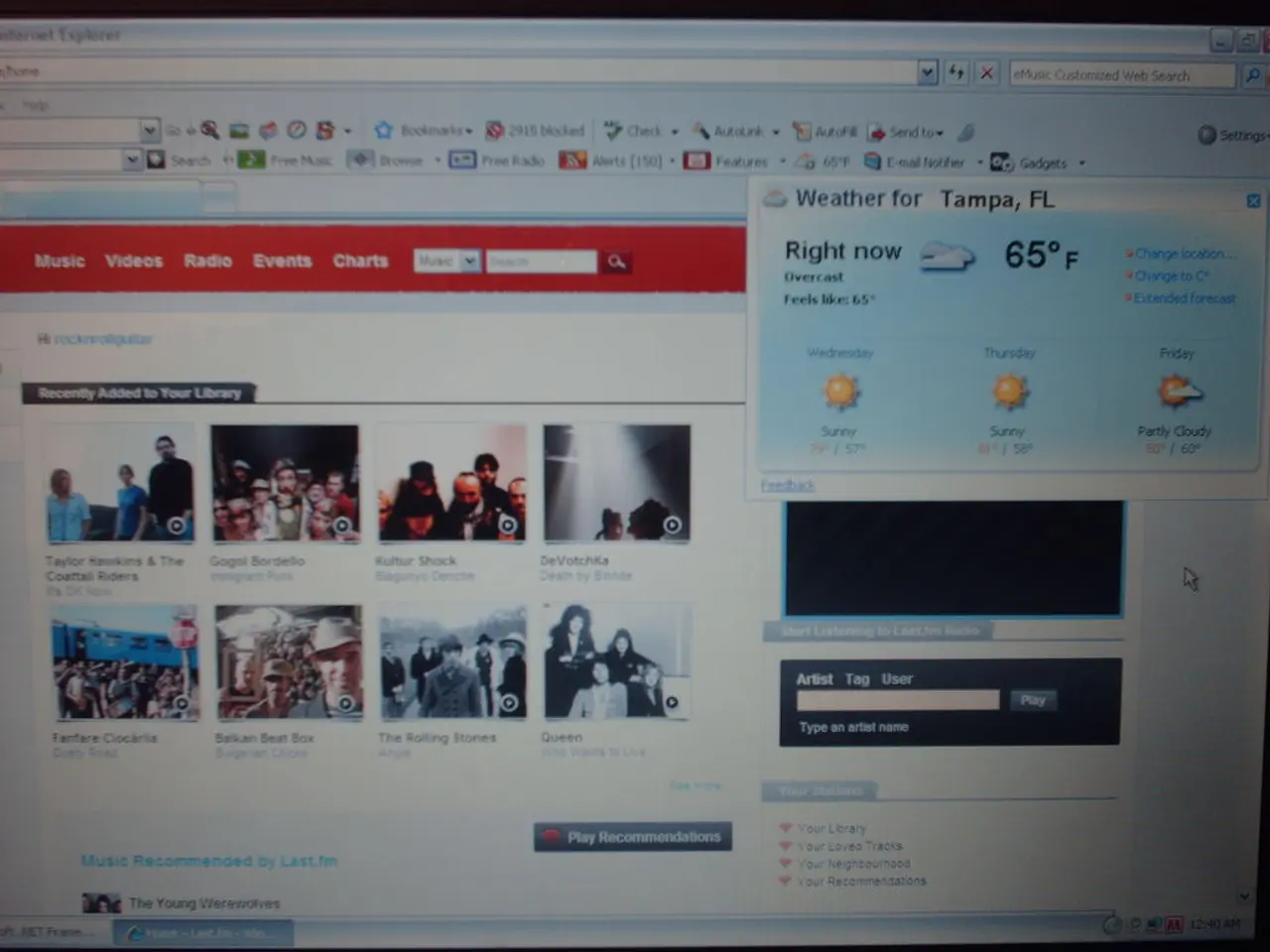Politician's audacious prescription for national security: Imminent government takeover of Cyber Command
In the digital age, music streaming services have revolutionized the way we listen to and discover new music. Each platform employs unique personalized recommendation algorithms to cater to diverse listening preferences.
Spotify: A Leader in AI-Driven Music Recommendations
Spotify, a pioneer in the industry, leads with a complex blend of AI technologies. The streaming giant uses Natural Language Processing (NLP) on social media, deep audio analysis, and reinforcement learning to create highly adaptive and nuanced recommendations. It's AI-driven algorithms, such as Discover Weekly and Release Radar, offer a personalized music experience tailored to user mood, sonic similarities, and trends [1][3].
Pandora: Expert-Curated Music Analysis
Pandora, another popular music streaming service, predominantly relies on the Music Genome Project. This project uses expert-curated musicological attributes to classify songs based on their melody, harmony, rhythm, and other intrinsic features. Unlike many other platforms, Pandora focuses on content-based filtering, analysing the inherent properties of songs rather than relying heavily on user-based collaborative data [2].
Apple Music: Balancing Algorithm and Human Touch
Apple Music offers a unique combination of collaborative filtering, human editorial curation, and machine learning. It integrates user listening patterns with expert playlists and editorial insights to provide a balanced human-algorithm approach. Apple Music's personalized playlists, alongside curated content, aim to maintain a balance between algorithmic and human recommendations [2].
YouTube Music: The Multimedia Approach
YouTube Music leverages Google’s powerful AI ecosystem, combining user behavior data, contextual signals (like location and time), and video + audio content analysis. Unlike other platforms, YouTube Music integrates music videos, live performances, and rare tracks in recommendations. It favors continuously updated radio stations over static playlists, reflecting both audio and visual engagement [4].
These platforms' recommendation systems reflect their content philosophies and technological strengths, influencing the style and quality of personalized music discovery. By analysing listening habits, preferences, and video engagement, YouTube Music personalizes the user experience. Pandora stands out with its unique blend of human curation and sophisticated technology, using the Music Genome Project for song analysis. Apple Music's curated playlists are handpicked by experts to reflect current trends or specific moods.
The quest for discovering new sounds and artists has been made easier thanks to digital music platforms. Personalized music recommendations enhance user engagement and foster deeper connections to music. Whether you're a fan of pop, rock, or classical, these platforms offer personalized music recommendations to help listeners navigate the vast ocean of sound.
- In the realm of streaming services, Spotify, Pandora, Apple Music, and YouTube Music each employ unique approaches to personalized music recommendations, catering to diverse listening preferences by combining AI technologies, expert curation, and user behavior analysis for an enhanced user experience.
- As digital platforms for food-and-drink exploration and technology advancements continue to flourish, one might envision a future where similar personalized recommendations guide consumers to discover new culinary experiences or innovative technology products, much like these music streaming platforms have revolutionized the lifestyle of music enthusiasts.




